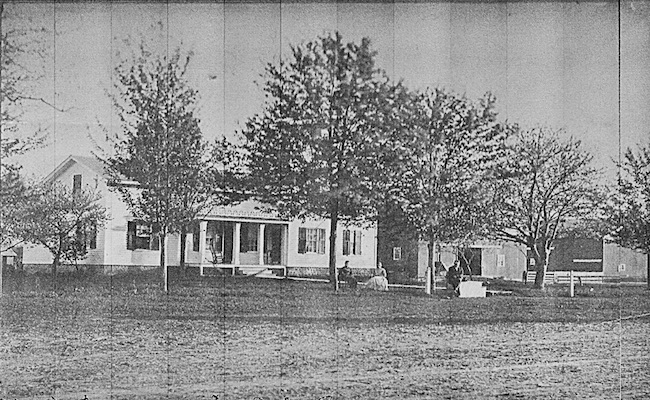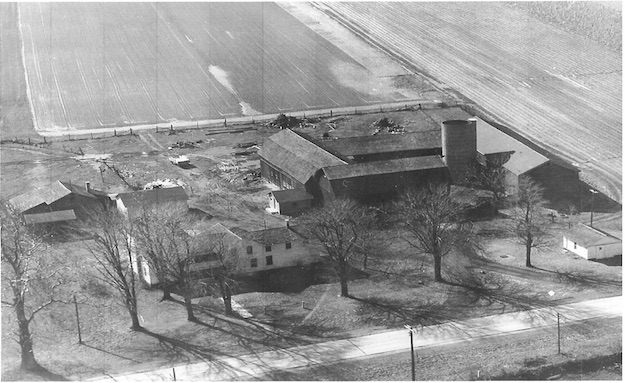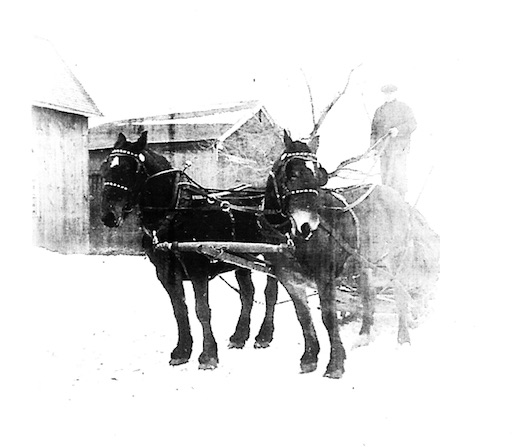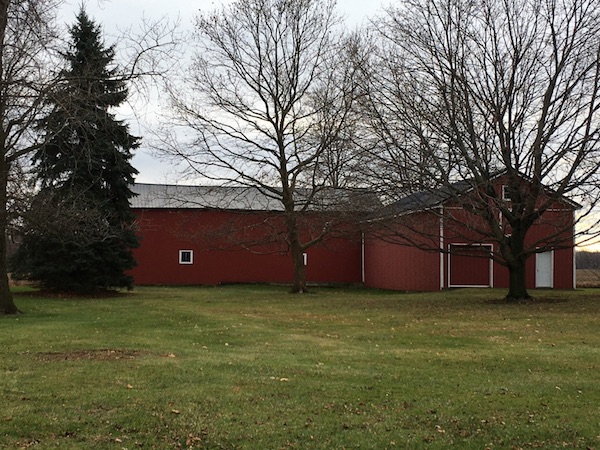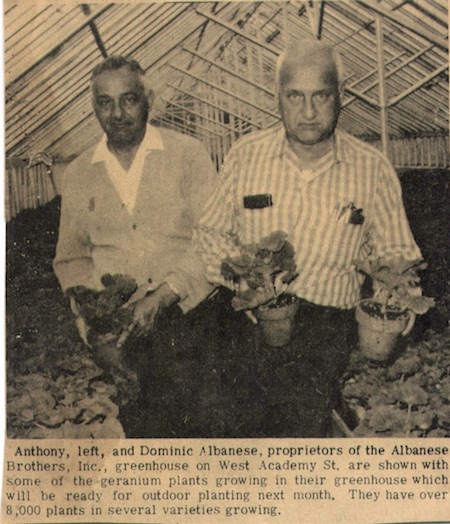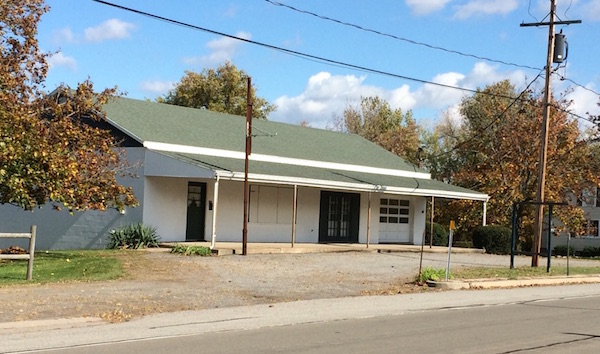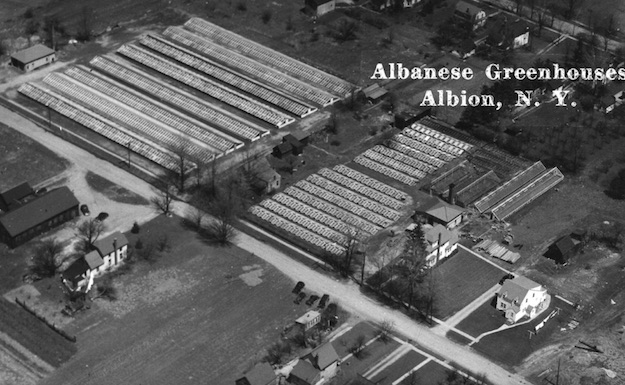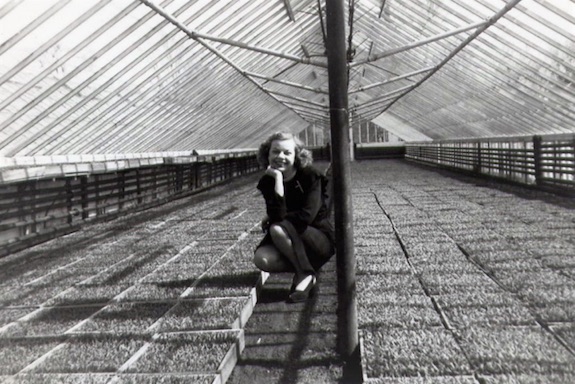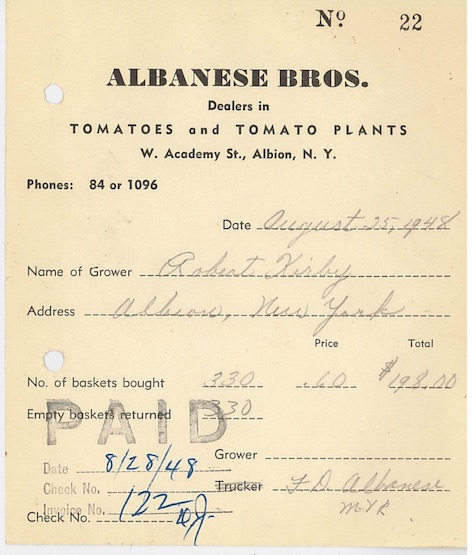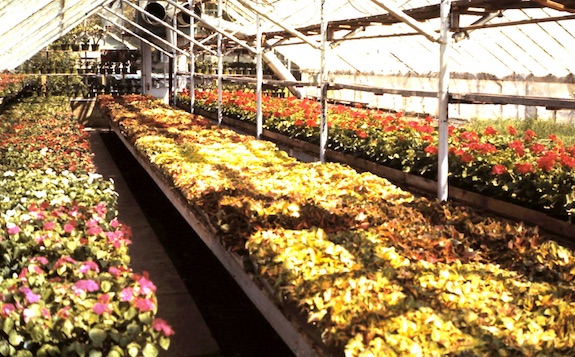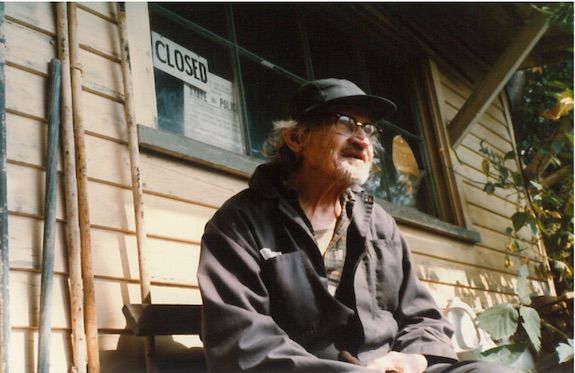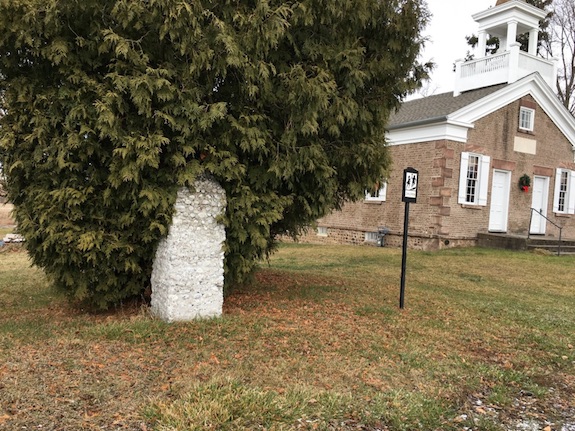Historic Childs: Agriculture in the Hamlet, Part 2
By Doug Farley, Cobblestone Museum Director
GAINES – The Thompson family farm is another longtime farming operation in the Hamlet of Childs whose roots go back to the early 1800s. In 1872 Henry Williams bought the farm to the east at the corner of Brown Street Road and Route 104 thus enlarging the farm to 235 acres.
Elmer Thompson of East Barre married Henry’s daughter, Theda Williams, and moved into the homestead on Ridge Road. Their son Charles Thompson inherited the farm from his father. He married Hannah Harding and they had four children: Gary, Gail, Ruth and Ross. The Thompson farm as seen is this picture from the late 1800s shows an unpaved Ridge Road. Paving was not accomplished until the 1920s.
Charles Thompson operated the dairy and cattle farm on both sides of Ridge Road. He started with Black Angus beef cattle and added 35 milking cows. The beef cattle were out to pasture on the north side of the road, except during the winter months when they were housed in the west barn. The dairy cows were put out to pasture during the day on the south side of the road. The picture shows the dairy barn and milk house on the east. The Thompson farm also included a farm seed business that supplied corn, wheat and other seeds to local farmers.
Historian Bill Lattin examined the large hand-hewn beams in the back barn that is still standing and dated its construction to the 1820s.
Activity on the farm continued year around. As late as the 1940s, farm chores were done in the winter using horses to pull a sled.
Charles Thompson’s daughter, Gail (Thompson) Johnson, who still lives on land once held by the farm, has many fond memories of family life growing up. She said, “I really enjoyed playing outdoors. We stayed home. I played in the corn picker and pretended it was a spaceship.” Gail said she learned her simple philosophy of life from her father and mother. Charles did not spend money foolishly. He lived a frugal life and only bought what he could pay for with cash, including all of the farm equipment.
Gail remembers when the family first bought a television set in the 1950s. They watched it together as a family about one hour every evening. Gail recalled that at a certain point in time the TV broke and Charles decided they wouldn’t get it repaired. He said, “You kids should do your homework instead.” And, that’s what they did.
Gail’s mother Hannah lived a simple life, too. She was a thrifty homemaker and canned farm produce to make meals for her family. Following her husband’s death, a friend asked Hannah if she was going to can some fruits and vegetables for the winter. Hannah remarked, “No! I am not going to be a slave to another vegetable.”
Gail said her father stopped farming around 1960 and put his land in the Soil Bank Program instead. She said, “The state kept coming up with new regulations, year after year, like demanding that the barnyard be paved with cement. Dad had complied for years with the state but it became very difficult to make a living. He had gone from simple milk cans to bulk milk tanks which had cost quite a bit of money.” The Soil Bank paid farmers not to grow crops, but to mow the grass instead. Gail said government regulations forced a lot of the small farmers in the region to go out of business.
Gail remembered that her parents were involved in many farm related activities including Gaines Grange. She said, “My mother used to sell donuts at the Grange square dances on Saturday evenings.” She also recalled attending family picnics at Indian Falls, probably related to her father keeping Brown Swiss cows. She said, “Our farm was pretty much self-sufficient. Beef and dairy cows brought in meat and milk, and chickens supplied eggs.” Like most farms, the Thompsons had a large vegetable garden to provide their daily needs.
The Albanese brothers – Anthony, Dominick and Frank, farmed about 50 acres along the north side of the Ridge in Childs between the Cobblestone School and Church in Childs. They also operated the Orleans Hotel in Albion from 1944-1955. Their farming enterprise included a large farm on Sawyer Road where they grew Apples, cabbage and tomatoes, among other crops. They also had a large labor camp on Sawyer Road to house about 100 migrant laborers who came up from the south to harvest the crops.
In the 1950s the brothers built a combination liquor store and farm market on Ridge Road. They sold a large variety of homegrown produce in their roadside stand, seen here, in Childs. Anthony’s son, Robert Albanese, remembers working at his father’s Sawyer Road farm during High School. Bob said, “I worked weekends on the farm. They had over 300 acres of orchards and all-in-all we picked 100,000 bushels of apples each year.” In addition to the roadside stand, the farm sold produce to Comstock Foods. Farming continued there until about 2000.
The Albanese Brothers farming operation also included greenhouses on West Academy Street in Albion that raised over 5 million tomato plants each year. They sold these to local farmers and to the tomato industry. The greenhouse operation continued into the 1990s before they were all removed.
Robert’s mother, Eleanor Albanese, is shown inside one of the greenhouses in about 1950.
Bob Albanese recalled that each tomato flat contained 118 young plants which were started each year from seed. He remembers having to track down all of the empty wooden flats again in the fall so the process could start all over again each year. Here we see an Albanese Brothers invoice for Robert Kirby’s purchases of 300 flats of tomato plants in 1948. While $198 was a lot of money in 1948, it averaged out to one-half cent per tomato plant.
Here are some of the colorful annual bedding plants grown in the Albanese greenhouses that kept gardeners coming back year after year.
Businesses that supplied goods and services to farms and farm workers were also important to any farming community, and Childs was no exception. One of these businesses was the Janus Service Station and Garage located between the Cobblestone Schoolhouse and Albanese Farm Market on Route 104. Owner Frank Janus sold Sinclair Gas and convenience store items to farm workers and highway passersby beginning in the 1900s. He also specialized in repairing cars, trucks and farm equipment. Frank’s wife, Victoria, operated a lunch room on the premises before the NYS Thruway opened in 1954. Historian Bill Lattin remembered, “I bought the last drop of gas sold there in 1970s. The pump ran out of gas in mid-fill and that was the end of that.”
Very little remains of the Janus Service Station today, except two “cobblestone” style pillars that once held Sinclair Gasoline globes.



























